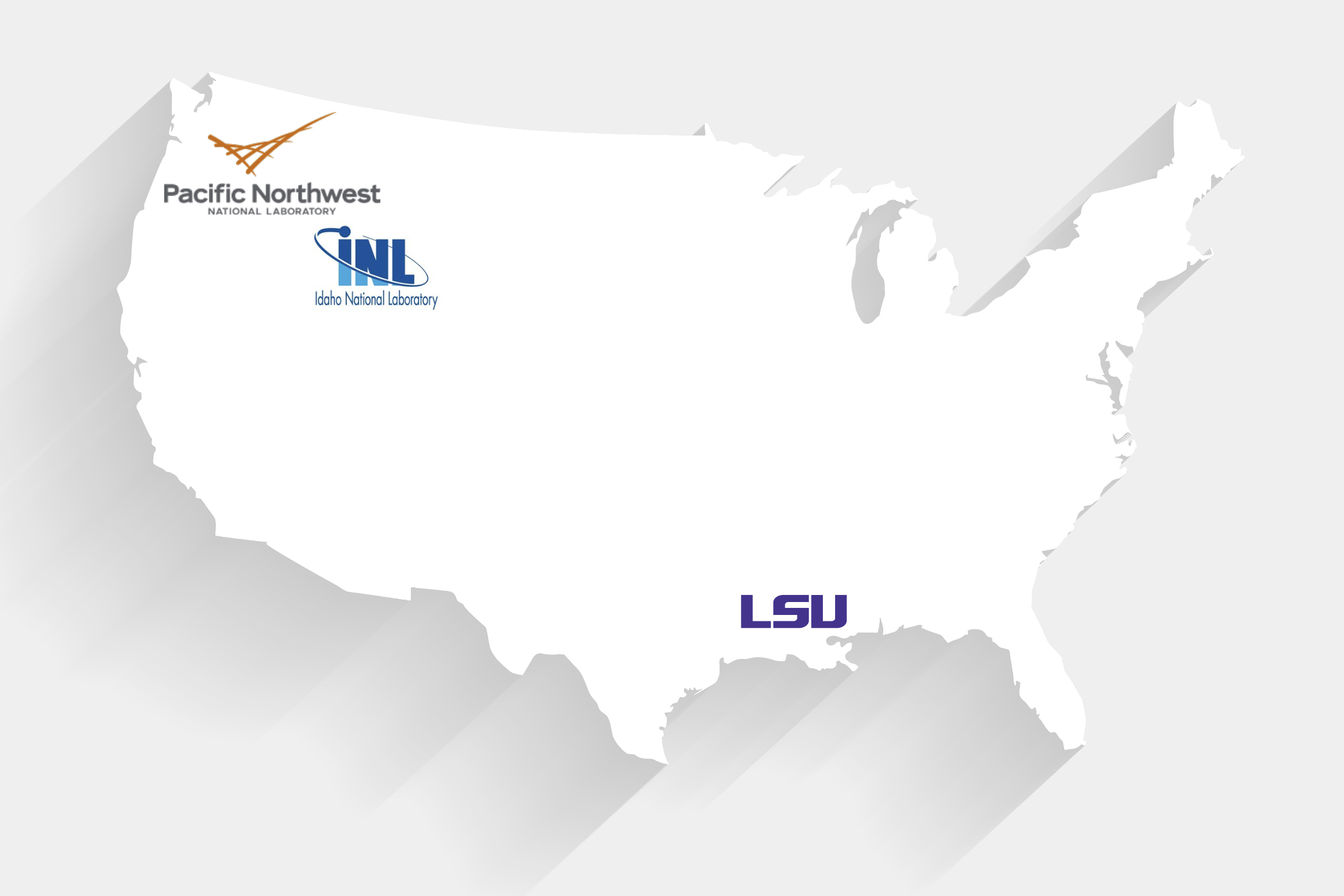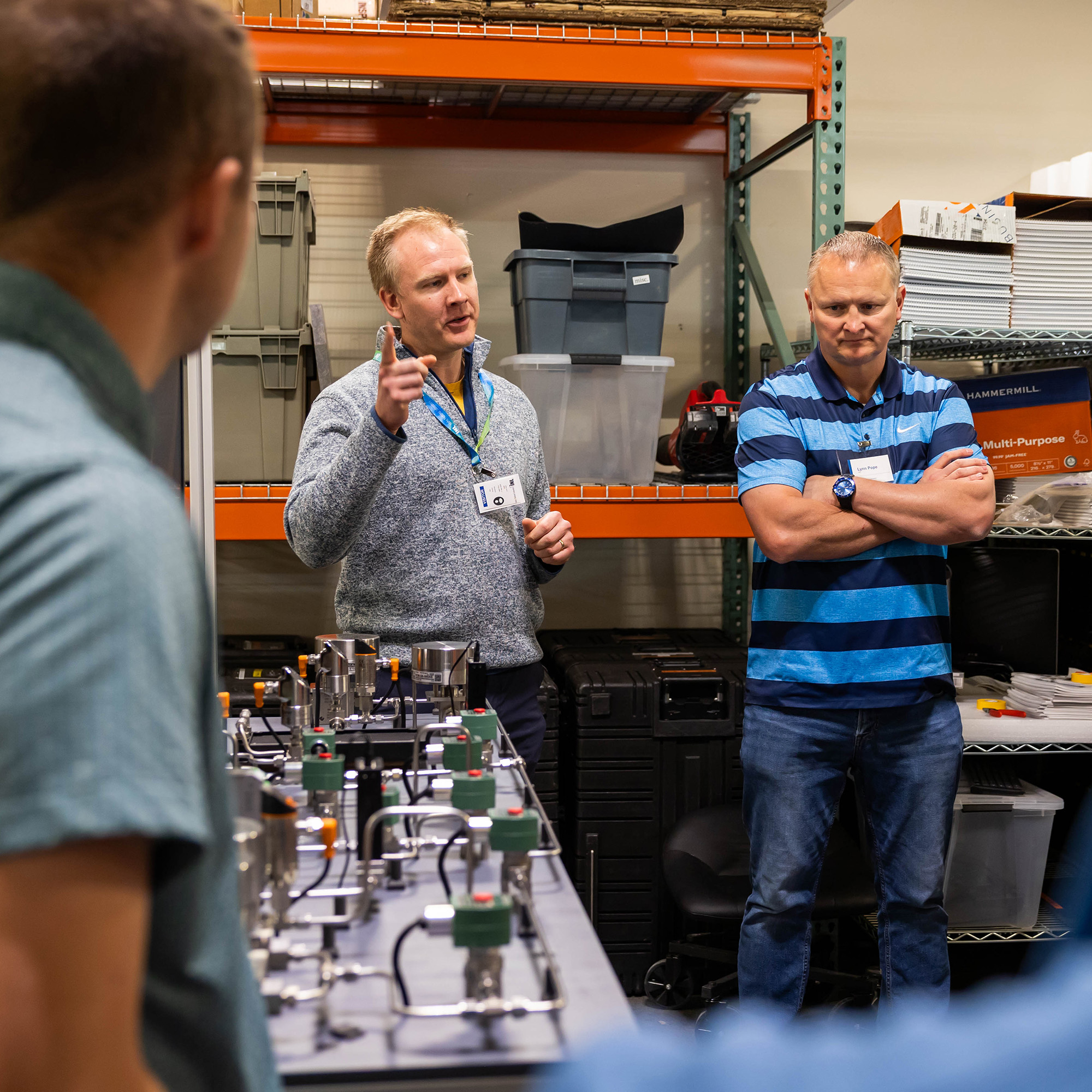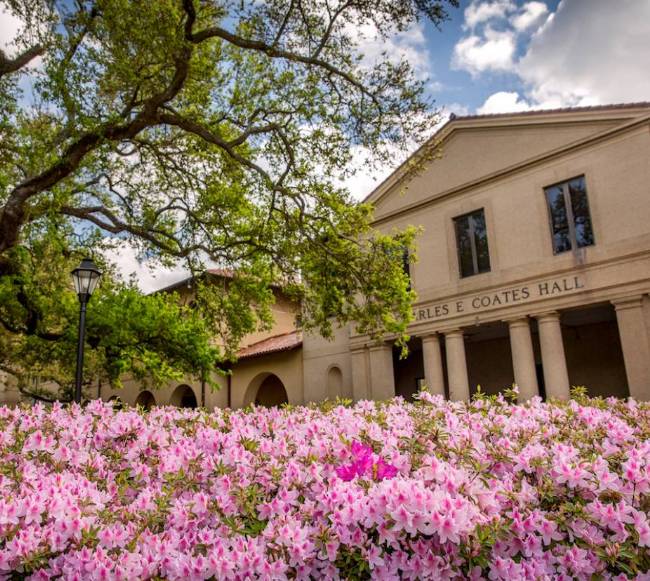“A Slam Dunk”: LSU Emerges as National Leader in Cyber for Critical Infrastructure
July 01, 2025
Accelerating Cybersecurity for the Energy Industry

LSU’s new Tiger Skid, an investment by the Department of Homeland Security’s Science and Technology Directorate in partnership with the nation’s Cybersecurity and Infrastructure Security Agency (CISA) and built by Idaho National Laboratory (INL), will enable LSU faculty, staff, and students and energy industry, state agency, and national security partners to train and learn to defend against cyberattacks on critical infrastructure. Photo courtesy of INL.
LSU is the first university in the nation to partner with the Cybersecurity and Infrastructure Security Agency (CISA), the Department of Homeland Security Science and Technology Directorate (DHS S&T), and Idaho National Laboratory (INL) on a unique model for cybersecurity for critical infrastructure.
Louisiana’s unique energy, chemical, and manufacturing assets and LSU’s industry partnerships and cybersecurity expertise are positioning the state as an epicenter of advanced cyber talent and technology development.
As part of this model, LSU will soon receive custom equipment—the first of its kind on a university campus—for cybersecurity training for critical energy infrastructure. The Tiger Skid, as it’s called, will be installed on LSU’s flagship campus in Baton Rouge this summer and housed at LSU’s Petroleum Engineering Research, Training & Testing (PERTT) lab. The PERTT lab is already home to six research wells and field-scale instrumentation where university faculty, staff, and students work directly with industry to develop new technologies and solve energy challenges. Through the Tiger Skid, industry and agencies will now have access to a cyber threat training and research environment like nowhere else in the U.S.
“When we heard LSU has an oil well on its campus, I was very intrigued—no college or university had ever told us that,” said Alex Reniers, threat hunting section chief at CISA. “A month later, we were at LSU, and it was astonishing to see their investment, the quality of the coursework, and how many cybersecurity students there were.”

There are only three U.S. locations with cyber-physical skids: Idaho National Laboratory, Pacific Northwest National Laboratory, and LSU.
– Illustration by Elsa Hahne
From there, the dominos fell quickly. CISA engaged DHS S&T, the research and development arm of DHS, to fund the Tiger Skid as part of CISA’s Control Environment Laboratory Resource (CELR) program. S&T then partnered with INL to build it.
The Tiger Skid is a cyber test range and benchtop model of critical energy infrastructure with integrated industrial processes that demonstrate how real-world facilities could be compromised through cyber-physical attacks. It is the first CELR to be installed at a university and will be managed by LSU students who will gain hands-on experience in a rapidly evolving field that is essential to Louisiana’s economy and to national security. The Tiger Skid will serve owner-operators in the oil and gas industry, while additional CELR components could be added for chemical manufacturing and power generation operations.
“This partnership is a wonderful example of DHS S&T’s role in enabling effective, efficient, and secure operations by applying scientific, engineering, analytic, and innovative approaches to deliver timely solutions,” Acting Executive Director for the S&T Office of Mission and Capability Support Jonathan McEntee said. “By positioning a platform in close proximity to critical infrastructure owners and operators, as well as making it accessible to the next generation of oil refinery workforce through the university, DHS S&T and CISA are ensuring our nation’s oil supply remains secure and available to consumers.”

CISA’s Alex Reniers discusses the LSU Tiger Skid at Idaho National Laboratory.
– Photo courtesy of INL
In April, LSU and its national security and lab partners hosted a three-day, immersive cyber-threat-hunting exercise on one of the five CISA-sponsored CELR testbeds housed at INL in Idaho. The training included several of LSU’s energy industry partners in Louisiana.
“Malicious cyber actors and nation-state adversaries are a persistent, highly capable threat to critical infrastructure operations, functionality, and safety,” CISA Deputy Executive Assistant Director for Cybersecurity Matt Hartman said. “Collaborating with LSU and industry partners is extremely beneficial in strengthening the nation’s cybersecurity knowledge and ability to respond to threats.”
“LSU has positioned itself as a collaboration nexus between government and industry which makes this partnership a slam-dunk as far as value-add for the control systems community. CISA’s investments in CELR have supported and benefited a range of critical infrastructure sectors. We have encouraged and continue to encourage the community to make their own investments in similar capabilities.”
Alex Reniers, threat hunting section chief at CISA
During the April training in Idaho, industry teams worked to detect, investigate, and respond to simulated attacks in an IT/OT environment. While most people are familiar with IT, OT stands for operational technology and deals with controlling and monitoring physical processes and equipment in industrial settings. The technologies are distinct but increasingly intertwined and cyberattacks on critical infrastructure can leverage one or both. Trainings using CELR platforms like the Tiger Skid help the energy industry secure their operations, and now, for the first time, this type of training can be offered in the South, in Louisiana, at LSU.
“CISA and DHS S&T looked at the long-term benefits,” Reniers said. “Not only will LSU’s energy industry partners be using the Tiger Skid, but we’ll have college kids using and training on control systems environments—they’re getting that unique OT cybersecurity experience, which means we’re creating a pipeline for future workforce. The outcomes will greatly benefit national labs, control system owner-operators, government agencies, and our nation’s critical infrastructure.”
Read more: CISA, DHS S&T, INL, LSU Help Energy Industry Partners Strengthen Incident Response and OT Cybersecurity (CISA, April 23, 2025)
Next Step
LSU's Scholarship First Agenda is helping achieve health, prosperity, and security for Louisiana and the world.


